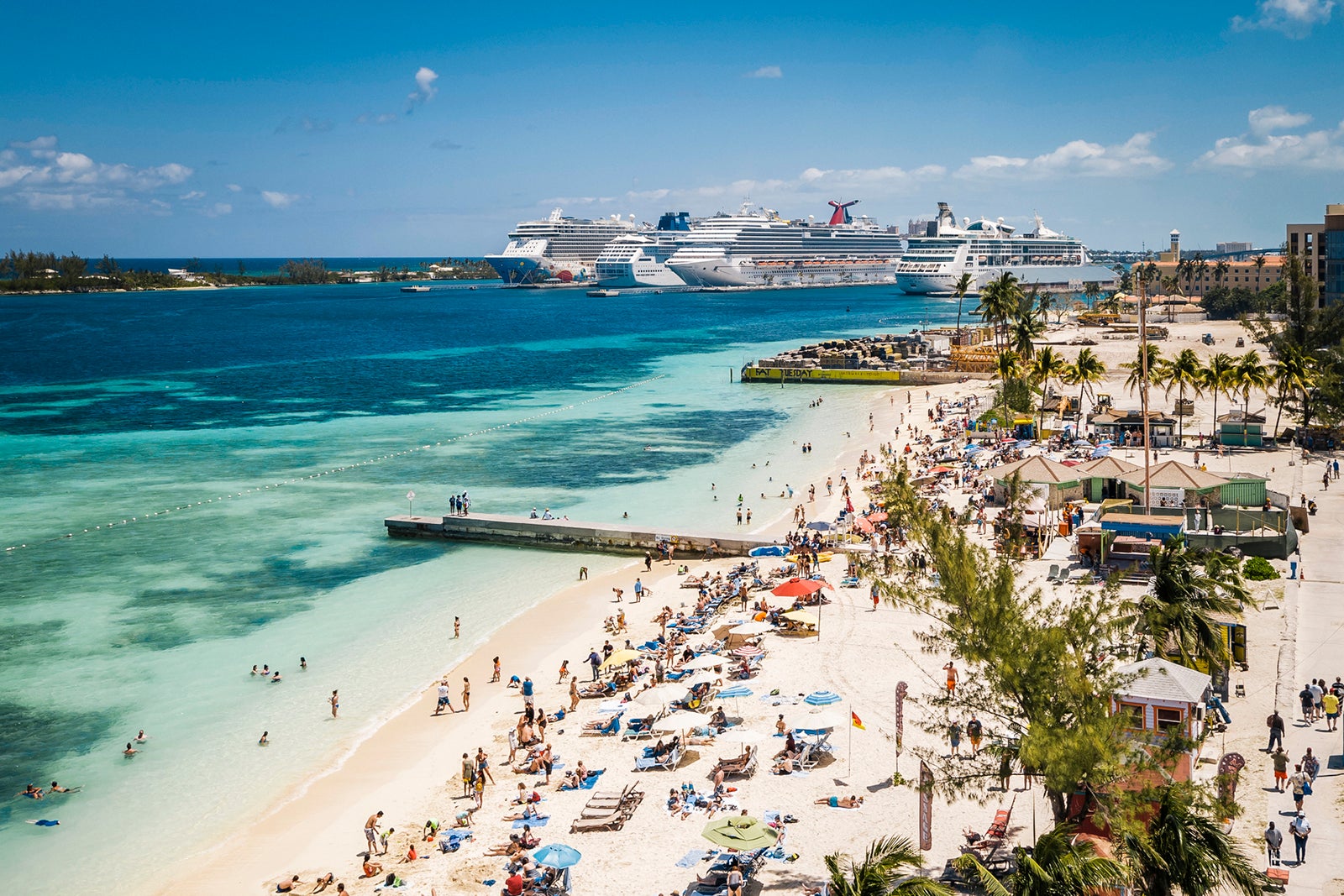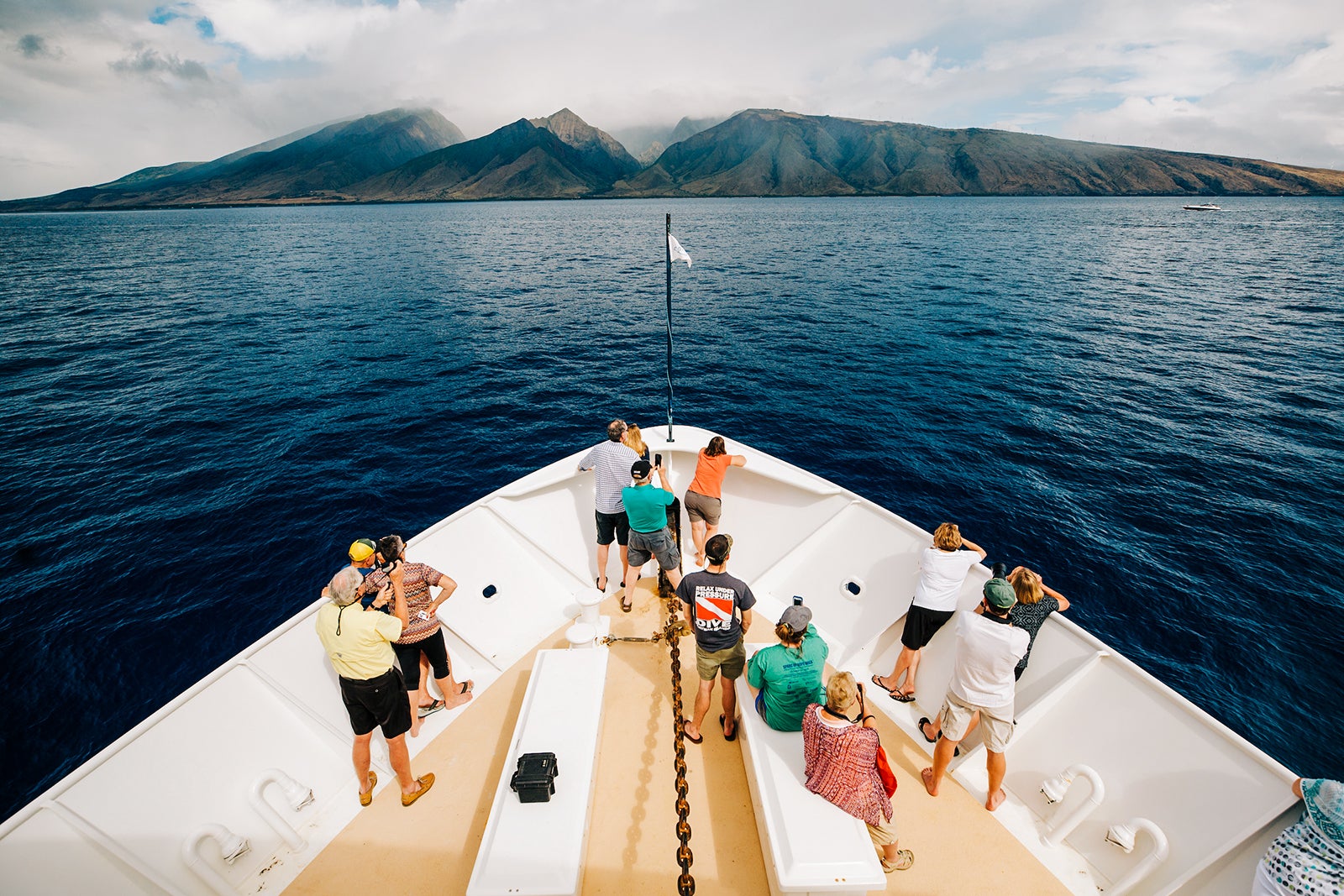Cruise ship stabilizers are features built into the ship to reduce its side-to-side motion (or roll). Though most cruise ships have a variety of active and passive design elements working to provide a smoother ride for passengers, the retractable wing-type stabilizers on the sides of the ship below the water line are the kind the average passenger commonly thinks about.
Let’s explore how the various types of stabilizers work and how they help to improve your cruise.
How do cruise ship stabilizers work?
The stabilizers that most often come to mind first are the fin-style stabilizers, which are considered active stabilizers because the captain must deploy them. When not deployed, they are fully retracted out of the way. This is particularly important when the ship docks or cruises in narrow channels.
I recently had the opportunity to visit the bridge on Celebrity Reflection during departure from the British Virgin Islands. Because the retraction of the stabilizer fins is so critical amid the multitude of small islands in the BVIs, the bridge team did not rely solely on high-tech instrumentation to keep them informed about the stabilizers.
They also had a large hand-printed note stuck on the wall above the windows in everyone’s full view indicating whether the stabilizers were deployed or not — like you would use a “dirty” and “clean” note on your dishwasher at home. As we left the island chain and entered open water, the captain verbally gave the order to deploy the stabilizers and the sign was changed.
Stabilizer fins are easy to understand. As waves strike the sides of the ship, the fins help keep it from tipping too far to one side. Picture a tightrope walker carrying a pole for balance or gymnasts using their extended arms on the balance beam to stay centered and unwavering.
While stabilizer fins smooth out the ride for passengers, the downside is increased fuel usage. They also are not as effective at speeds below six knots (around 7 mph). Think of that like the wobbling of an airplane at the relatively slower speeds required for landing. The wings stabilize the plane effectively when it is at higher altitudes and higher speeds, but not so much when the plane must slow down. It’s the same with cruise ship stabilizers.
Related: How is cruise ship speed measured, and how fast is a knot in miles per hour?
Beyond active stabilizer fins, bilge keel stabilizers have been a maritime standard for more than a century. First used in the late 1800s, these are internal pump and tank systems. Originally, they relied on stationary baffles to slow water movement in the tanks from side to side. Today, they are computer-controlled, using the weight and motion of water inside the tanks to match sea conditions and counterbalance the ship.

Daily Newsletter
Reward your inbox with the TPG Daily newsletter
Join over 700,000 readers for breaking news, in-depth guides and exclusive deals from TPG’s experts
Some ships may also feature small external protrusions on the hull that help disrupt water flow, helping with overall stability. These are the most passive forms of stabilization.
How do stabilizers help me have a better vacation?
Cruise ship stabilizers improve the overall vacation experience by reducing the types of motion most likely to cause motion sickness.
Those who are highly prone to motion sickness will tell you that any movement of a ship makes them nauseous. For most people though, the side-to-side rolling motion is often the worst, followed by the front-to-back motion called pitch. Deployment of retractable stabilizer wings primarily lessens roll, doing little to stop pitch.
Some large ships have two pairs of stabilizer fins, which help a bit with pitch. The longer the ship, the less pitch passengers feel as the movement spreads across multiple waves along its length.
Cruising on an unstable ship takes away some of the fun even if you aren’t prone to motion sickness. The ship’s crew might close pools and outdoor activities if the ship is rocking too much. Acrobats, aerial performers or jugglers might not be able to perform at their best, or at all. In extreme cases, too much motion can disrupt dining venues and bars. Imagine the risk to both servers and patrons if food, drinks and glassware become unstable enough to slide off serving trays and tables.
Without stabilizers, even more of the fun stuff would be at risk of cancellation due to safety-first protocols.
Related: Do you really need a motion sickness patch for a cruise?
Do all cruise ships have stabilizers?
All cruise ships have stabilizers of one form or another. Almost all modern oceangoing cruise ships have retractable fin-style stabilizers. Smaller coastal ships and ferries often lack these, as they are useless in narrow straits and channels and at slow speeds. These ships rely instead on ballast systems and hull design to combat uncomfortable motion.
Which cruise ships have the best stabilizers?
The newer the ship, the more likely it is to have a highly sophisticated, computer-controlled stabilizing system capable of producing the smoothest ride possible. Imagine fins that tilt and rotate slightly as computer sensors detect the exact angle of the waves the ship is passing through. Even the best stabilizers do not, however, guarantee a complete lack of motion on board the ship.
Planning a cruise? Start with these stories:


